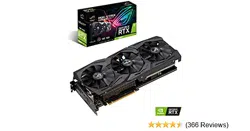Loading ...
Loading ...
Loading ...

Turing Ray Tracing Technology
NVIDIA Turing GPU Architecture WP-09183-001_v01 | 27
Image Courtesy of the SEED division of EA (SEED//Pica Pica Hardware Raytracing and Turing)
Figure 16. Hybrid Rendering Pipeline
Rasterization and z-buffering is much faster at determining object visibility and can substitute for
the primary ray casting stage of the ray tracing process. Ray tracing can then be used for shooting
secondary rays to generate high-quality physically correct reflections, refractions, and shadows.
Developers can also use material property thresholds to determine areas to perform ray tracing
in a scene. One technique might be to specify that only surfaces with a certain reflectivity level,
say 70%, would trigger whether ray tracing should be used on that surface to generate secondary
rays.
We expect many developers to use hybrid rasterization/ray tracing techniques to attain high
frame rates with excellent image quality. Alternatively, for professional applications where image
fidelity is the highest priority, we expect to see use of ray tracing for the entire rendering
workload, casting primary and secondary rays to create amazingly realistic rendering.
Turing GPUs not only include dedicated ray tracing acceleration hardware, but also use an
advanced acceleration structure described in the next section. Essentially, an entirely new
rendering pipeline is available to enable real-time ray tracing in games and other graphics
applications using a single Turing GPU (see Figure 17).
Loading ...
Loading ...
Loading ...
